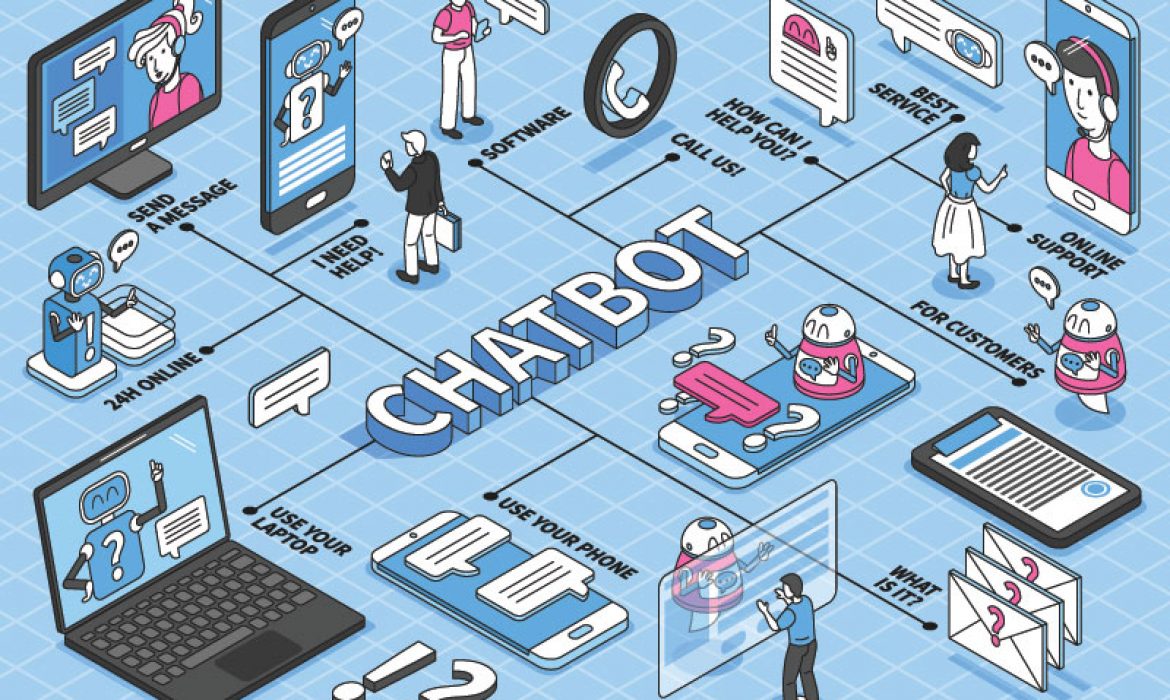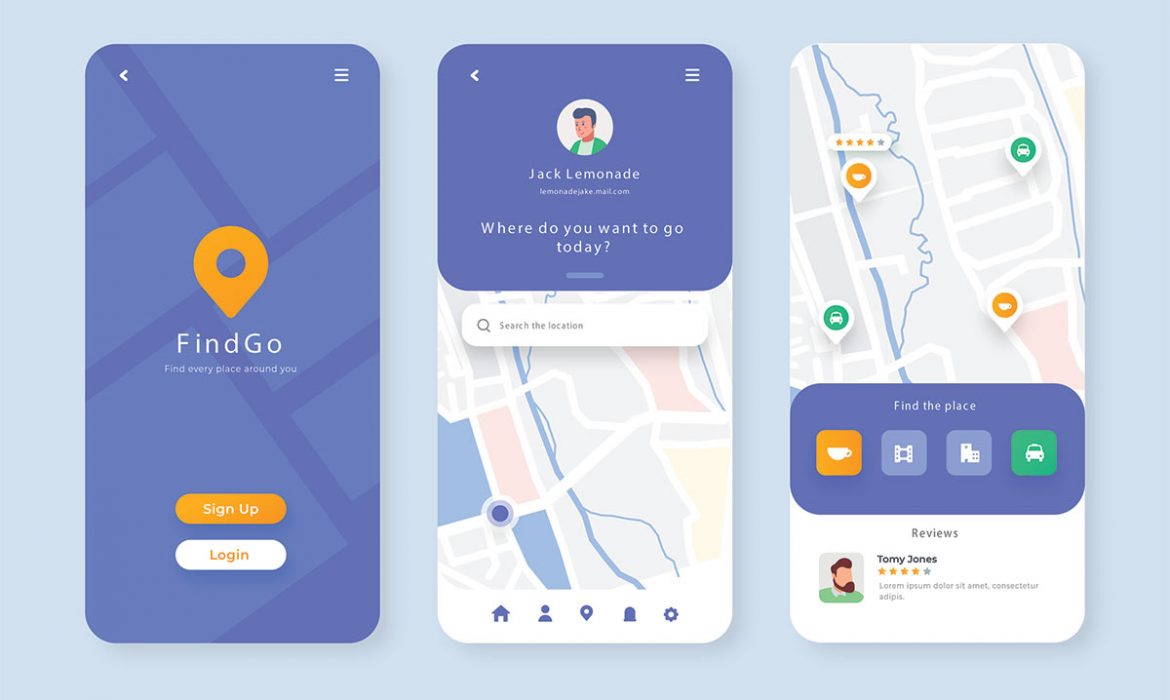Business chatbots: what are they?
The term “chatbot,” of English origin, comes from the fusion of two words: “chat” (to converse) and “bot” (robot). The term was coined by computer scientist Michael Mauldin, creator of the Chatbot Verbot and Lycos, one of the first search engines in Internet history. As often happens when technology becomes part of our daily lives, it integrates into our routine almost imperceptibly. Initially taking small steps, then becoming more pervasive. In today’s reality, we converse much more frequently with machines than we realize—machines that not only offer coherent responses to our questions but also simulate the dynamics of a normal human conversation.
Today, these software programs generate responses of all kinds. There are simpler and more widespread programs capable of automated responses through a series of keywords. There are also more advanced programs that leverage the possibilities offered by “machine learning” and Artificial Intelligence to provide non-automated, conversational responses. These virtual assistants rely on natural language understanding and can learn user preferences, tailoring searches and responses accordingly. Some examples of these chatbots include Apple’s Siri, Amazon’s Alexa, Microsoft’s Cortana, and Google Assistant.
Among the many instant messaging tools available today is the online chatbot, a software designed to simulate a conversation with a human being. Thanks to the significant advancements in artificial intelligence, chatbot development can understand the context and intent of a conversation to provide the most appropriate responses.
Chatbot: What Are They?
The possibility of simulating a human conversation through software was hypothesized in 1950 by Alan Turing in his famous article “Computing Machinery and Intelligence.” In his paper, the renowned British mathematician and cryptographer proposed determining a robot’s intelligence through its ability to simulate a human dialogue without the interlocutor realizing it. This test, historically known as the Turing test, marked the beginning of a revolution that continues to accompany us today.
Seventy years after that publication, Turing’s proposal is no longer a mere hypothesis but a concrete reality with specific impacts on our daily lives. Today, for example, free chatbots are available to companies to make customer support faster and more immediate. Among the most well-known are chatbots for WhatsApp, Messenger, and Telegram.
How Does a Chatbot Work?
There are two main types of chatbots: declarative and predictive. The former are single-purpose programs dedicated to tasks focused on executing a function, generating automated yet conversational responses to user requests. Interactions with these chatbots are highly specific and structured. Task-oriented chatbots are capable of handling common questions and are currently the most widely used.
Predictive chatbots, on the other hand, are data-driven (from conversations) and are often referred to as virtual assistants or digital assistants. They are much more sophisticated, interactive, and personalized compared to task-oriented chatbots. These chatbots are contextually aware and use natural language understanding to learn.
They apply predictive intelligence and data analytics to enable personalization based on user profiles and past user behavior. Digital assistants can learn user preferences over time, provide recommendations, and even anticipate needs. In addition to monitoring data and guidelines, they can initiate conversations.
Key Features and Benefits of Chatbots for Businesses
- Provide Timely News and Information: Based on parameters provided by customers or users.
- Real-Time Responses: Answer questions in real time, directly solving many logistical problems.
- Increase Engagement: Enhance user engagement and involvement.
- Execute Promotional Activities: Carry out promotional and marketing activities with profiled users.
- Assist in Purchasing: Help customers with purchasing products and services.
- Automate Repetitive Tasks: Delegate tedious and repetitive tasks to the software.
- 24/7 Operation: Chatbots operate tirelessly and can offer personalized dialogue.
Chatbot Developed by Diecipoints
Example of a Chatbot Created for Our Client
Chatbot for Ukrainian Refugees
One area where our chatbots are already being used successfully is the humanitarian field. We developed a chatbot for a major Italian non-profit organization, which operates to defend the rights of refugees and asylum seekers. This multilingual chatbot, accessible via the Telegram app, is specifically designed to assist Ukrainian refugees, providing real-time information on safety measures, asylum procedures, and other relevant issues.
Main Features and Advantages
- Continuous Availability: Our chatbot is active 24/7. This means that refugees can access crucial information and assistance at any time without waiting for traditional office hours or human assistance.
- Multilingual and Intelligent: The Diecipoints chatbot is much more than a simple linguistic interface. It is incredibly intelligent and capable of automatically recognizing different languages, including Ukrainian and other languages spoken by refugees. This flexible communication ability helps overcome language barriers, ensuring everyone can access the information they need without difficulty.
- Time and Cost Savings: The chatbot is an efficient solution that saves precious time and reduces operational costs. It responds instantly to frequently asked questions and provides vital information without requiring human presence 24/7. This allows the non-profit organization to focus on more specific and complex activities while the chatbot handles basic requests.
- Continuous Learning: The real power of the Diecipoints chatbot lies in its ability to learn and improve continuously. Each user interaction is an opportunity to refine responses and enhance the chatbot’s skills. Frequently asked questions are analyzed and, if necessary, integrated into the chatbot’s knowledge database for increasingly precise, efficient, and rapid future responses.
- Integrated Human Support: Despite its autonomy, the Diecipoints chatbot is designed to offer a smooth transition to human support when necessary. If a request exceeds the chatbot’s capabilities or requires a deeper understanding, the chatbot can easily refer the user to a human operator, ensuring no request goes unanswered.
- User Requests in Various Languages: The chatbot responds in the language of the request, whether French, Spanish, Ukrainian, or any other supported language.
Business apps: what are they for and what are the benefits
Increasingly, in recent times, many companies are questioning the best way to gain visibility and thereby increase revenue in the vast world of the Internet. Certainly, developing an application for their business is important, and analyzing the data on the spread of smartphones and tablets, it might even be considered necessary. It is also important to consider the variety of operating systems and the most used devices. The mobile app must be developed for both Android and iOS systems and made available on Google Play and the Apple Store. Additionally, in some specific cases, it is important that it also works on tablets or certain specific models of smartphones.
Business Management Apps
Creating a business app first and foremost increases the brand’s visibility, making it much easier for the public to remember. An application allows for a much stronger, recognizable digital image that is always “in sight” of people potentially interested in the services offered. Greater visibility also translates into a clearer, distinguishable, and modern brand identity that keeps pace with new technologies and market demands. A corporate portal app can thus increase the brand’s popularity and enhance its value, making it perceived not only as distinguishable from competitors but also as smart and capable of leveraging the competitive advantage offered by new technologies.
Moreover, being always accessible and representing a direct communication channel, a business app greatly contributes to customer loyalty. With just one touch, users can connect with the brand while the company can send real-time information and stay in contact with its potential customers 24/7. A business mobile app can be equipped with various functionalities such as news feeds, messaging tools, subscription and booking forms, and search tools.
Employee Business Apps
While the benefits of externally used apps are numerous and well-understood, those of internally used apps are equally important.
Apps can significantly contribute to optimizing internal processes within the company by offering more versatile and functional solutions for managing certain activities.
What Can an App Do for a Company and Its Employees?
For example, it can:
- Improve internal communication: Simplify the exchange of information and documents between company departments, keeping everyone updated.
- Better manage orders and reservations: An internal business management app can facilitate the work of salespeople who can send customer orders to the relevant department with a click.
- Create catalogs and manage inventories: Business management apps allow the creation of product catalogs that can be consulted offline from anywhere and also keep stock levels under control.
- Optimize customer service: Customer support is crucial for any company, and apps can offer a much faster and more functional customer service, significantly improving reputation.
- Facilitate employee training processes: Apps are particularly useful for staff training, offering flexibility and monitoring that are hard to match with traditional classroom courses.
- Monitor reviews and social interactions: In terms of reputation, it is important to know what users think of the brand. Apps can monitor customer reviews and survey social interactions, helping to understand what customers appreciate and what needs improvement.
The Best Business Apps of 2024
Among the latest business apps is Atlassian, a collaboration tool that combines messaging, video calls, and other communication tools. Its repertoire includes the Focus Mode to eliminate user distractions from notifications and messages and the “Actions and Decisions” function to categorize, assign, and save specific items. Notifications are customizable, images can be annotated, and files can be embedded.
Spark, in its free version, offers in-app calls, display sharing, up to 5 GB for file sharing, and integration with up to 10 apps. For task management, there is Asana, a business management app that allows the creation of lists to add and organize work. Reminders, tasks, ideas, and more can be included, along with the ability to share with teams to discuss and develop projects and communicate updates on individual and common activities.
It tracks employees’ commitments, including priority levels, deadlines, schedules, notes, and reminders. The platform organizes a calendar that can be shared with colleagues and has a geolocation feature to send reminders based on the user’s location. The app aims to allow employees to access files in their folders from any device and, most importantly, to share them. This facilitates workflow, ensuring everyone always works with the desired files in their most updated version, synchronized with their colleagues’ versions. The business version offers more storage space and enhances document security compared to the free version.
Business Intelligence: What is it and how can it help your company?
Business intelligence (BI) encompasses all the processes and tools through which a company can collect various types of data, analyze it, and make strategic decisions. Every day, companies and organizations generate an incredible amount of data, which is often useless to the company except for the original purpose for which it was created. However, with the advancement of BI tools like Business Analytics, companies can use the collected data to make strategic decisions more quickly and effectively.
Business Intelligence: Definition
In practice, business intelligence combines business analytics, data mining, data visualization, tools and data infrastructure, as well as best practices to enable organizations to make more data-driven decisions. The concept of traditional business intelligence first emerged in the 1960s to describe an information-sharing system within organizations. It further developed in the 1980s alongside computer models for decision-making and data transformation into information. Modern BI solutions prioritize flexible self-service analysis, governed data on trusted platforms, more efficient business users, and information speed.
Business Intelligence: What is it?
“Business intelligence” is an all-encompassing term that refers to the processes and methods for collecting, storing, and analyzing data from business operations or activities to improve performance. All these elements create a comprehensive view of the company, helping people make better, actionable decisions.
In recent years, business intelligence has evolved to include more processes and activities to improve performance. These processes include:
- Data mining: Using databases, statistics, and machine learning to uncover trends in large datasets.
- Reporting: Sharing data analysis with stakeholders to draw conclusions and make decisions.
- Performance metrics and benchmarking: Comparing current performance data with historical data to monitor performance against goals, usually done using customized dashboards.
- Descriptive analysis: Using preliminary data analysis to understand what has happened.
- Querying: Asking specific questions of the data, where BI retrieves the answers from datasets.
- Statistical analysis: Further exploring data using statistics, such as determining how and why a particular trend occurred.
- Data visualization: Transforming data analysis into visual representations, like charts, graphs, and histograms, for easier data consumption.
- Visual analysis: Exploring data through visual representations to communicate insights on the fly and follow the flow of analysis.
- Data preparation: Compiling data from various sources, identifying dimensions and measurements, and preparing it for data analysis.
Business Intelligence: Examples
The functioning of a business intelligence analyst depends directly on a company’s decision-making process, meaning that each company sets goals and must find the best way to achieve them. This requires asking questions about both the past and the future. Today, the answers to these questions are found through data analysis. After finding the answers, companies can determine the actions needed to achieve their objectives.
Data is collected from all business activities such as marketing, advertising, and sales, then stored and accessed by users to conduct analyses that will answer the company’s questions. Business intelligence works alongside Data Analytics and Business Analytics, which involve data analysis and business analysis, respectively. Business intelligence is designed to draw conclusions from data analysis, and business analytics is a part of this broader strategy. Analysts use data to identify future patterns and answer the chain of questions that instinctively arise.
Business Intelligence Software
In general, a business intelligence solution is a combination of strategy and technology for collecting, analyzing, and interpreting data from internal and external sources, ultimately providing insights and analytics on the past, present, and future state of the subject being examined. The terms business intelligence and business analytics are often used interchangeably.
However, business analytics specifically refers to the process of examining data to find trends and insights. Modern BI/business analytics solutions offer applications to help you gain actionable insights at every stage of the process. This includes applications for data preparation, analysis, data visualization, reporting, and collaboration for use on-premises, on the desktop, in the cloud, and on the go with mobile capabilities.
Business Intelligence Analyst
A rapidly growing profession, the data analyst is responsible for analyzing information to define strategies for various business processes using business intelligence tools. The business intelligence analyst works with various company managers (from marketing to logistics, production to human resources, and research and development) to identify issues that slow down the business and can be solved through data analysis.
The work of data collection and analysis allows the business intelligence analyst to support companies in making strategic changes to maintain competitiveness. Data sources today are varied and numerous, ranging from management software houses and internal databases to social media. These are the well-known business intelligence big data. All data comes in different formats (numbers, documents, photos, videos, audio, etc.), which must be processed and organized to extract useful and readable information. This is the work of the data analyst: to make this mass of data structured and interpretable by the company’s management.
User Experience Design Custom apps and software
User Experience Design: The Advantage for Relationships
User Experience, often abbreviated as UX, refers to designing the experience that a customer will have in their interactions with a brand, whether through using its services or products. For many companies, identifying the customer’s experience is a pivotal element in developing their strategy, while for others, it is a significant challenge to overcome.
The common mistake is to focus on the brand or the product itself and completely overlook the customer. The key point lies here: shifting the perspective to the people, regardless of whether they are end customers or businesses. This first step will enable the brand to focus on customer differentiation rather than creating differentiated products.
Many elements can make up the complex puzzle of User Experience, but two are essential: Personas and Customer Journey.






